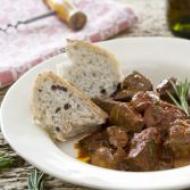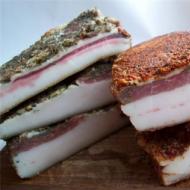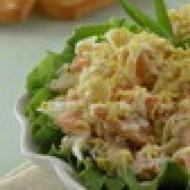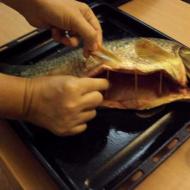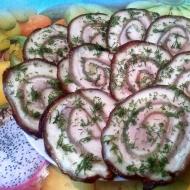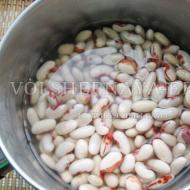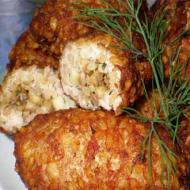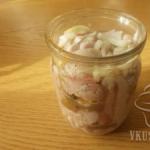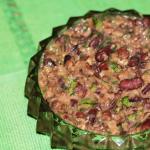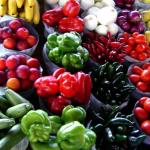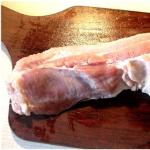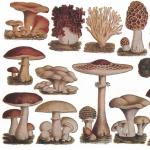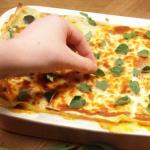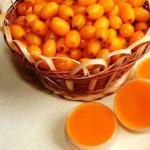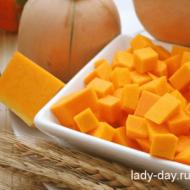
In the traditional section “cuisine of the peoples of the USSR” there is a recipe for the Turkmen dish dograma. Traditional cuisine of Turkmenistan Dishes of Turkmen cuisine recipes
The vast desert spaces with rare oases in Turkmenistan led to the practice of cattle breeding and contributed to the fact that for most Turkmen meat and milk became the main food products. The food of shepherds in the Turkmen desert is simple and unpretentious. In modern Turkmen cuisine, meat dishes are often increasingly giving way to combined meat-cereals, meat-dough and meat-vegetable dishes. Dishes of Turkmen cuisine are hearty and original. Prepare them at home and feel like you are at a friendly Turkmen table!
As a rule, among Turkmens, men have always had the best cooking abilities. During any crowded feast, in a separate area, where huge cauldrons are bubbling and barbecues are blazing with saxaul heat, an experienced male cook presides. Women are not allowed access here.
Let's try ourselves in the role of Turkmen hospitable chefs by preparing traditional dishes.
SHURPA SOUP (TURKMEN)
Ingredients: Lamb 80g, lamb lard or animal fat 10g, sour cream 15g, flour 10g, potatoes 185g, onions 20g, tomatoes 80g, carrots 25g, spices.
Preparation: Cut the potatoes into large cubes, pour in the broth, let it boil, then add the tomatoes, cut into four parts, and lightly sautéed onions, carrots, flour, bay leaf, pepper and cook until tender.
Serve the soup with a piece of boiled lamb and sour cream.
BEAN SOUP WITH NOODLES.
Ingredients: lamb 300 g; beans 150 g; 2 tablespoons flour; egg 1 pc; onion 1 piece; lamb fat 60 g; sour milk 600 g; ground red pepper - to taste.
Preparation: Place lamb and beans in a saucepan. Pour in cold water and cook.
After an hour and a half, add chopped and lightly fried onions, noodles, and red pepper.
Before serving, remove the soup from the heat and season with sour milk.
OKROSHKA AZHGABAD
Ingredients: Chal (made from kefir) 300 g, lamb 110 g, green onions 40 g, fresh cucumbers 80 g, sour cream 20 g, 1/2 egg, dill 50 g, salt.
Preparation: The dish is prepared from the products indicated above. It is allowed to replace fresh cucumbers with pickled cucumbers and radishes, and lamb with beef and lean pork. Okroshka is also prepared with potatoes, reducing the amount of meat by 20 g.
BALYKLY YANAHLY-ASH (fish pilaf)
Ingredients: fish fillet 500 - 760 g, 0.5 cups sesame oil, 4 - 5 onions, 3 carrots, sour cream 0.5 - 0.75 cups, rice 1 - 1.5 cups, 1 parsley (root), greens parsley and dill - 2 tbsp. spoons, saffron - 2 pinches; pomegranate juice - 0.5 cups (or juice of 0.5 lemon), bay leaf, pepper, salt.
Preparation: Place bay leaf, pepper, parsley, onion, then pieces of fish fillet into boiling water and cook for about 10 minutes over moderate heat. Remove the fish, transfer to another bowl, cover with finely chopped onion (2 onions), part of the pepper, parsley and dill, add salt, part of the saffron, pour sour cream over everything and put on very low heat. Heat sesame oil, fry chopped onions and carrots in it, pour in strained fish broth, bring to a boil, immediately add pre-soaked rice and cook over moderate heat until all the liquid has boiled away. After this, add pepper, saffron, stir the rice and put on very low heat for 20 minutes to simmer. Place the ash in a deep plate, pour pomegranate juice over it, and serve the fish in a separate bowl.
PILAV WITH PEPPER IN TURKMEN STYLE
Ingredients: Rice - 90 g, onion - 40 g, tomato puree - 10 g, bell pepper - 30 g, vegetable oil - 10 g, water - 160 g, spices, salt.
Preparation: The washed rice is mixed with sautéed tomatoes, onions and sweet peppers, cut into rings, salted, poured with water and cooked until tender. Pilaf can be served hot or cold.
BALYK BEREK (Ogurjalin manti)
Ingredients for the dough: 500 g wheat flour, 1 egg, 1 teaspoon. spoon of salt, 0.5 cups of water.
For minced meat: 1 kg fish fillet, 3 onions, 1 egg, 1 teaspoon each. a spoonful of red and black pepper, 2 pinches of saffron, 2 - 3 tbsp. spoons of parsley and dill, salt.
Preparation: Knead a stiff dough from flour, eggs, salt and a small amount of water. Let stand under a napkin for about 40 minutes, then roll out into a layer 1 - 2 mm thick and cut into 10x10 cm squares. Cut the fish fillet or chop into 1 cm cubes, add finely chopped onion, ground black and red pepper, saffron, finely chopped spicy herbs , salt, beaten egg. Mix everything thoroughly and immediately fill the manti: add 1 tbsp. spoon of minced meat, pinch the dough on top. Steam the manti in a manti cascan or a large saucepan. Place a deep plate, greased with oil, on the bottom of the pan, put manti on it in one row, cover with another plate, fill the bottom of the pan with water, close the lid tightly, put on low heat and cook after the water boils for 25 - 30 minutes.
SWITLI ASH (milk porridge)
Ingredients: Rice - 45 g, water - 100 g, milk - 70 g, sugar - 6 g, butter - 15 g, salt.
Preparation: Add salt and sugar to boiling water, then washed rice and cook the porridge, stirring lightly. After 20 minutes, pour in hot milk and continue cooking at low boil for 30-40 minutes. Served with butter.
HAGENECK (Omelet)
Ingredients: Wheat flour - 5 g, eggs - 3 pcs. or egg powder - 40 g, butter - 10 g, milk - 20 g, salt.
Preparation: Mix beaten eggs with milk, salt, flour. The mass is poured into a hot frying pan with oil and baked in an oven. Heygenek can be made from melange or egg powder.
DUMMITS
Ingredients: 3 cups flour; 120 g vegetable oil; 10 g yeast.
Preparation: Prepare stiff yeast dough in water, without baking.
Roll out the finished dough into round flat cakes the size of the frying pan in which they will be fried.
Heat the oil and fry the tortillas on both sides.
SHASHLIK STEPPE
Ingredients: Lamb - 175 g, onion - 20 g, garlic - 2 g, herbs - 25 g, spices, salt.
Preparation: Cut the lamb into strips 10-15 cm long and wrap the minced meat in them. The shish kebab is threaded onto a skewer and grilled over coals. The minced meat is a mixture of chopped onions, garlic, herbs, salt, and spices. When serving, sprinkle with salt.
ROASTED LAMB WITH TOMATOES
Ingredients: 600-650 g lamb; 120 g lamb tail fat; 150 g onion; 700 g tomatoes.
Preparation: Chop the lamb into pieces of 40-50 g.
Place in a bowl with heated fat and fry on all sides. Pour in 2-3 tablespoons of hot water.
When all the water has boiled away, add the cut into pieces fat tail fat, tomatoes and onions. Cover the dish with a lid. Simmer until done.
Serve sprinkled with chopped parsley.
The vast desert spaces with rare oases in Turkmenistan led to cattle breeding and contributed to the fact that meat and milk became the main food products.
After the Great October Socialist Revolution, the living conditions of the Turkmen people radically changed. Significant changes have occurred in the national cuisine of the Turkmens during the years of Soviet power. New products have appeared, which in the past were not accessible to the broad masses of workers: potatoes, tomatoes, cabbage, pasta and confectionery, sugar, various canned fish, meat and vegetables. The diet has become significantly richer. But Turkmens still prepare their favorite dishes from meat, flour and dairy products. Lamb, goat meat, camel meat, and less often beef, are included in the daily menu of the population. Dishes are prepared mainly from natural meat.
In most cases, cooking meat comes down to frying small pieces of it in its own fat with further stewing in a clay pot (this is “govurma” - a dish similar to the Uzbek and Kazakh “kavurdak”) or frying the meat of young animals over hot coals “kebala” or “ ball"). At the same time, kebab made from the meat of a young mountain goat is considered a purely national Turkmen kebab (“key-ikjeren kebap”).
The Turkmens have methods of preparing and preserving meat that are not found among other Central Asian peoples. Special climatic conditions contribute to this: high air temperatures, dry hot winds and strong heating of the sand. One of these methods is drying the meat in the wind under the scorching sun. Very large pieces of meat are strung on the tip of a high pole and left there for several days. Such dried meat is called “kakmach”.
In modern Turkmen cuisine, combinations of meat with other products have already begun to be used: meat and flour, meat and cereals, meat and vegetables. These dishes are similar to the already known pilaf, manti, beshbarmak, but the Turkmens have their own differences and other names. Thus, pilafs are called “ash”, beshbarmak – “gulak” (among the Tekins – “belke”, Yomuds – “jacket”), manti – “berek”. The Turkmens also have their own purely national meat-cereals and meat-flour dishes: ogurjali-ash, yshtykma, etli unash, gatikli unash.
Of all the Central Asian cuisines, only Turkmen in a number of areas, especially adjacent to the Caspian Sea, widely uses fish in its diet, and among the Ogurdzhali people it even occupies a central place in the cuisine. The Ogurjali Turkmen adapted fish to traditional Central Asian technology, i.e., they fry it on a spit or in hot oil in cauldrons and consume it with sesame seeds, rice, apricots, raisins, pomegranate juice, i.e. with products that, from a European point of view, are not go well with fish. Ogurdzhali residents use mainly sturgeon, stellate sturgeon, as well as sea and river pike perch, catfish, mullet, carp and kutum. The use of all herrings that have a specific smell that does not combine with the sweetish-sour seasoning that goes with the fish is absolutely excluded.
Flour products occupy a large place in the diet of Turkmens, especially the rural population. National Turkmen bread - churek; It is baked outdoors in special tandoor ovens. Bread is prepared from sour, unleavened (petyr-chorek) and puff pastry (gatlama), and is also baked in the form of pancakes (charadi).
Turkmen cuisine uses a lot of vegetables: radish, tomatoes, pumpkin, carrots; legumes - beans, mung beans, peas. An abundance of onions, herbs and spices is also characteristic. The set of spices is also special. Along with the obligatory onion and red pepper, mint, wild parsley, azhgon, buzhguk (pistachio tree golls), saffron, asafoetida or its substitute - garlic are widely used. Due to its specific smell, asafoetida is used in minimal doses: it is not placed in dishes, but one or two lines are drawn along the bottom of the cauldron. This is enough for the dish to acquire a garlic-onion aroma.
When preparing first courses, the traditional method is maintained: the meat is first fried and the soup turns out more aromatic and acquires a golden brown hue.
The range of cold appetizers is limited. Turkmen cuisine differs significantly from other cuisines in the range of fats. Much more widespread than melted fat tail fat, which is usually used in Central Asia, is melted butter from camel milk (sary yag) and especially sesame oil, which Turkmens use in the preparation of both meat and fish, flour and sweet dishes.
Various dairy products are very popular in Turkmenistan. Milk - cow and sheep, goat and camel - is consumed both natural and processed. From it, using lactic acid, rennet and alcoholic (yeast) fermentation, the original Turkmen dairy products agaran (cream from camel milk), chal (an excellent soft drink), karagurt, teleme, sykman, garfish are obtained.
The most common drink in Turkmenistan is tea, and people drink a lot of it. In most regions of the republic, as a rule, green tea is brewed (“gek chai”), and the cattle breeders of Western Turkmenistan prefer black long tea (“gara chai”), into which they add fresh camel milk.
The Turkmen's sweets are basically the same as those of other peoples of Central Asia, although the assortment is sharply limited and is essentially reduced to kabat and bekmes made from watermelon and, less often, grape juice. The most common fruit is apricot (apricot), and melons are watermelons and melons.
Recipes of Turkmen cuisine
1 . Stuffed liver
The liver is cut along its entire length, part of the pulp is cut out, the resulting depression is filled with minced meat, and the edges are sewn together with twine. To prepare minced meat, viscous buckwheat porridge is boiled, sautéed onions, carrots, poached and chopped liver, salt, pepper and lezon are added. Stuffed liver is poured with sauce and simmered until cooked. When serving, the liver is poured with the sauce in which it was stewed and sprinkled with herbs.
Beef or lamb liver 180, onions 30, carrots 30, butter 15, viscous buckwheat porridge 50; for lezon: flour 3, milk 5, egg 1/3 pcs., salt, spices, sauce 50.
2. Stuffed liver
The liver is stuffed with carrots, garlic, pasta and fat tail fat. Then it is fried, poured with sauce and simmered until cooked. The finished liver is cut into portions and served with a side dish, with sauce poured on top.
Beef or lamb liver 135, carrots 15, garlic 5, pasta 10, fat tail fat 10, salt, spices, sauce 75, side dish 150.
3. Stuffed tomatoes
Remove the core from medium-sized tomatoes, fill them with minced meat, pour sauce over them and simmer until tender. To prepare minced meat, the liver is boiled, passed through a meat grinder and combined with sautéed onions and carrots. When serving, stuffed tomatoes are sprinkled with herbs.
Tomatoes 120, onions 35, carrots 55, beef or lamb liver 45, tomato 10, salt, spices, herbs 35, sour cream 30 or sauce 75.
4. Chorba Turkmen
The meat is cut into small cubes, in much the same way as pumpkin and tomatoes, and the onion is chopped. The meat is fried in its own fat, adding oil if necessary, then add prepared vegetables and onions and simmer together for 20–25 minutes. Pour boiling water over everything, pepper, salt and cook over moderate heat until tender. Before serving, stale flatbreads are crumbled into plates, filled with broth, then the thick part of the shorba is laid out.
Lamb 190, melted butter 10, tomatoes 45, onions 55, pumpkin 100, pepper, salt.
5. Shorba Ogurjalinskaya
Beat the egg with water and finely chopped dill, add salt, add flour and knead into a stiff dough. Let it lie for 15 minutes under a damp towel, then roll it into a thin layer, cut the noodles (for shorba, use half the prepared noodles). Heat the oil in a cast-iron frying pan, add chopped onions and thinly sliced carrots, fry for 10 minutes, then transfer to an enamel pan. Place small pieces of fish on top, add salt, pepper, part of the bay leaf, saffron, pour in boiling water and cook for 5-7 minutes. Then the noodles are poured into the boiling shorba, the rest of the spices are added and cooked until the noodles are ready.
Fish 190, onions 35, carrots 20, sesame or other vegetable oil 15, saffron, ground black and red pepper, bay leaf, parsley, salt; for noodles: wheat flour 40, egg 1/2 pcs., dill 5, water 10.
6. Shurpa soup
Potatoes, cut into large cubes, are poured with broth, allowed to boil, after which tomatoes cut into four parts, lightly sautéed onions, carrots, flour, bay leaf, pepper are added and cooked until tender. Serve the soup with a piece of boiled lamb and sour cream.
Lamb 80, lamb lard or animal fat 10, sour cream 15, flour 10, potatoes 185, onions 20, tomatoes 80, carrots 25, salt, spices.
7. Shurpa-mash (mung bean soup)
Place rice in the broth, bring to a boil, then add mung beans, carrots, diced onions, sautéed tomatoes and bring to a boil.
Lamb 110, margarine 5, mung bean 20, rice 25, carrots 15, onions 15, tomato 15, salt, spices.
8. Dogroma-chorba (soup)
Lamb, kidneys, heart, lung are boiled, then finely chopped. Salt, pepper, tomatoes or tomatoes are added to the broth when cooking meat products. The churek is crushed into pieces, the onion is chopped. The meat, churek and onion are combined, poured with broth and brought to readiness.
Lamb 80, lamb kidneys 35, heart 35, lung 16, ghee 10, tomato 15, onion 60, churek 200, salt, spices.
9. Nokudly chorba (soup with peas and lamb)
Lamb is chopped into 2-3 pieces with bones per serving, filled with water and boiled along with peas and peppers. Finely chop the onion, sauté and add to the soup 15–20 minutes before the end of cooking.
Lamb 115, shelled peas 50, onions 15, lamb lard 10, ground red pepper, salt.
10. Unash (bean soup with noodles)
Lamb and beans are poured with water and cooked for an hour, then add noodles, sautéed onions, peppers and continue cooking until done. Season with sour milk. Lamb 75, beans 40, 1st grade wheat flour 1.5, eggs 5, onions 15, lamb lard 15, sour milk 150, ground red pepper, salt.
11. Umpach-zashi (flour soup)
Wheat flour is dried in a frying pan, when the color of the flour turns brown, diluted with water so that there are no lumps, add finely chopped sauteed onion, salt, ground red pepper and let it boil. Before serving, sprinkle with parsley or cilantro.
Wheat flour 50, melted lamb lard or cottonseed oil 20, onions 15, pepper, herbs, salt.
12. Gara chorba (tomato soup)
The lamb is cut into pieces weighing 15–20 g and fried until a crispy crust forms, then add 1/3 of the normal amount of chopped onion and fry along with the lamb. After this, the meat is placed in a bowl, filled with water, tomatoes cut into slices or tomato puree are added and cooked until the lamb is ready. When serving, add raw chopped onion on top.
Lamb 145, lamb lard 10, tomatoes 40, tomato puree 10, onion 100, salt.
13. Mastava soup
The beef is cut into pieces, poured with cold water and cooked until tender, then the broth is filtered and potatoes cut into large cubes, tomatoes into quarters, lightly sautéed onions and carrots into slices, rice, salt, pepper, bay leaf are added. When serving, add sour cream and a piece of meat to the soup, sprinkle with parsley or dill.
Beef 80, table margarine 10, sour cream 15, rice 30, potatoes 75, carrots 25, onions 20, tomatoes 40, bay leaf, pepper, herbs, salt.
14. Kufta-shurpa (soup with meat sausages)
The peas are poured with broth and cooked until fully cooked. The meat is passed through a meat grinder twice, mixed with half-cooked rice, seasoned to taste with salt and pepper and eggs are added. From this mass, 2 pieces of kyufta are cut. per serving in the form of sausages. Put potatoes into the broth, let it boil, then add finely chopped sauteed onions, carrots and kufta, add red tomatoes or tomato puree and the broth in which the peas were boiled and cook until tender.
Bones 100, lamb 75, rice 20, animal fat 10, peas 20, carrots 25, eggs 1/2 pcs., potatoes 50, red tomatoes 40 or tomato puree 10, onions 25, pepper, salt.
15. Suitli-unash (milk soup with noodles)
They prepare ordinary homemade noodles, but shred them to 10–15 cm in length. Boil them in a mixture of milk and water.
1st grade wheat flour 90, milk 300, water 150, salt.
16. Etli borek chorbasy (soup with dumplings)
Etli borek chorbasy is prepared in the same way as Siberian dumplings, only the products are shaped into quadrangles measuring 4×4 cm. Served with meat broth.
17. Naryn (soup)
Lamb and smoked brisket are poured with cold water, allowed to boil, the heat is reduced and cooked until tender, then the meat is removed, cooled, and cut into oblong pieces in the form of noodles. Chopped onions are fried in fat tail fat and combined with meat. Unleavened dough is kneaded from flour, water, and salt, rolled out thinly and cut into noodles. Slightly dried noodles are dipped into strained boiling broth, salt is added and cooked until the noodles are ready. When serving, put noodles on a plate, then meat with sautéed onions, sprinkle with ground black pepper and pour in hot broth.
Lamb 75, brisket 60, fat tail lard 10, onion 75, pepper, salt;
for noodles: wheat flour 40, water 60, salt.
18. Belke (dough side dish)
Knead the dough as for noodles (you can make the dough without eggs), roll out thinly, cut into squares 4×4 cm in size and put in boiling water, boil in water until tender and discard in a colander. When serving, place the product on a plate, fill it with broth and add sour cream or sour milk. Squirrel can be served with govurma.
Bones 200, onions 5, carrots 5, wheat flour 100, eggs 20, sour cream 25 or sour milk 80, or govurma 110, salt.
19. Gainatma
Fatty lamb (loin or brisket) is cut into pieces of 20–30 g with bones, poured with cold water, and onions are added. When the soup boils, add the washed peas and cook. 20 minutes before readiness, add potatoes, tomatoes, and spices. Fresh tomatoes can be replaced with dried tomatoes or tomato.
Lamb 160, peas 50, potatoes 110, onions 25, fresh tomatoes 120, bay leaf, pepper, salt.
20. Ashgabat okroshka
The dish is prepared from the products indicated in the layout.
It is allowed to replace fresh cucumbers with pickled cucumbers and radishes, and lamb with beef and lean pork. Okroshka is also prepared with potatoes, reducing the amount of meat by 20 g.
Chal (from kefir) 300, lamb 110, green onions 40, fresh cucumbers 80, sour cream 20, egg 1/2 pcs., dill 50, salt.
21. Gaplama (fish with vegetables)
Fresh mullet (mackerel) is gutted, salted from the inside, and lightly dried (1-2 days). Then the fish is cut up, the fillets are cut into oblong pieces, the potatoes are cut into cubes and fried until golden brown. Fry chopped onions and sliced tomatoes in hot oil, lightly salt them after 10-12 minutes, add half the parsley, a little pepper, then pieces of fish fillet, prepared potatoes and fry everything together over moderate heat for about 10 minutes. Gradually add water in small portions, add the rest of the pepper and spicy herbs and simmer until the fish becomes soft and most of the water has evaporated. When serving, sprinkle the fish with pomegranate juice.
Dried mullet fillet (mackerel) 125, potatoes 150, tomatoes 45, onions 35, sesame oil 25, pomegranate juice 5, herbs (parsley, azhgon) 10, black peppercorns, ground black pepper, salt.
22. Govurma (fried lamb)
Boneless lamb is cut into pieces (25–30 g), sprinkled with salt and pepper and fried until cooked. Serve by adding fried sautéed onions and sprinkle with herbs. Govurma is also used to prepare other dishes.
Lamb 200, lamb lard 20, onions 35, pepper, parsley, dill, salt.
23. Govurlan et (lamb fried with tomatoes)
The lamb is chopped into pieces of 20–30 g and fried, adding 100 g of water per 1 kg of meat. After the water has evaporated, add lard, onions, tomatoes and simmer until tender. When serving, sprinkle with herbs.
Lamb 160, fat tail fat 30, onions 40, tomatoes 40, herbs, salt.
24. Govurma with squirrel (lamb with a side dish of dough)
Boneless lamb is cut into pieces (about 30 g), sprinkled with salt, pepper and fried in fat tail fat. Separately, fry the onion cut into rings. Knead a stiff dough, as for noodles (you can do it without eggs), roll it out thinly, cut into squares 4×4 cm in size, and put it in boiling water. The finished squirrels (see description above) are placed in a colander, then placed on a dish, fried lamb (govurma) and fried onions are placed on top.
Lamb 125, fat tail lard 20, onion 75, pepper, salt; for squirrels: wheat flour 80, egg 1/2 pcs., water 50, salt.
25. Chekdirme (fried lamb with potatoes and tomatoes)
Fatty lamb is chopped into 3-4 pieces per serving, fried with fat until a crispy crust is formed, raw onions, potatoes, tomatoes cut into large pieces, salt, pepper are added and fried together with the lamb until cooked, after which a little water is added and simmered.
Lamb 160, animal fat 15, potatoes 105, fresh tomatoes 70, onions 20, pepper, salt.
26. Lula kebab, stewed with onions
Lamb, onions and lard are passed through a meat grinder, salt and pepper are added and everything is mixed. The kebab is shaped like sausages, fried in oil, and then stewed with onions. Serve in the same container as it was prepared. Churek is served separately.
Lamb 340, lard (raw) 10, onions 80, spices, butter or margarine 20, churek 200, herbs, salt.
27. Kokmach (langet)
The lamb is cut into portions (like a langet), beaten, salted, peppered and fried in lamb fat. Served with French fries or rice.
Lamb 170, lamb lard 10, spices, French fries 200, or rice 200, salt.
28. Shish kebab, steppe
The lamb is cut into pieces 10–15 cm long, minced meat is placed on them, wrapped, threaded on a skewer and fried over coals. To prepare minced meat, chopped onion, garlic, herbs, salt, spices, and pepper are thoroughly mixed. When serving, sprinkle with salt.
Lamb 175, onions 20, garlic 2, greens 25, salt, spices, pepper.
29. Yshtykma (stuffed game)
The wild duck is cleaned, singed, washed, dried, and rubbed inside with salt. Cut the onion into cubes, fry in hot sesame oil, add apricots, raisins, a little salt and simmer together for 10-15 minutes. Remove from heat, add finely chopped garlic, pepper, azhgon, salt, mix everything. The prepared filling is tightly stuffed into the bird, sewn up and fried in a cauldron in very hot sesame oil on all sides until a dark golden crust forms. Then pour in a little boiling water, add salt, pepper, chopped garlic, add spices (the same as in the filling) and simmer the bird, pouring over the resulting juice. The finished bird is transferred to another bowl, and boiling water is poured into the juice remaining in the cauldron, salt and saffron are added, and rice, previously soaked for 30–40 minutes, is added. Cook over low heat until the rice is cooked and the water has completely evaporated, without stirring. The finished rice is raked, the bird carcass is placed on the bottom of the cauldron and allowed to warm over low heat.
For 4 servings: duck 1500, rice 345, sesame oil 150, saffron, salt;
for filling: onion 300, apricots 220, raisins 50, garlic 5, ground red and black pepper, azhgon, salt.
Pilaf
Turkmen pilaf (ash) is similar to Uzbek pilaf, but here game, especially pheasants, is more often used as meat for pilaf. This pilaf is usually prepared with green rice. Carrots are partially or completely replaced with apricots, sesame oil is used for frying and the prepared ash is usually eaten with sour sauce made from albujara (small sour green plums such as mirabelle or tkemali) or with pomegranate juice extract.
30. Pilaf with rice
The washed rice is mixed with sautéed tomatoes, onions and sweet peppers, cut into rings, salted, poured with water and cooked until tender. Pilaf can be served hot or cold.
Rice 90, onion 40, tomato puree 10, bell pepper 30, vegetable oil 10, water 160, spices, salt.
31. Ogurjalinsky pilaf
The lamb is chopped into pieces (50–60 g each) and fried in hot oil, adding finely chopped onions and carrots into strips, as in regular pilaf. After 20–25 minutes, the meat is removed from the virvak, transferred to boiling water, boiled until cooked, then it is transferred to a separate bowl, and the broth is poured into a cauldron with zirvak, rice and apricots, spices (azhgoi, pepper, saffron) are added and boiled first under the lid until the water evaporates, and then 10-15 minutes on low heat until dry. 3-5 minutes before readiness, place the meat on the rice, sprinkle it with parsley and dill and let it simmer for a few minutes.
Lamb 180, onions 60, carrots 80, rice 100, sesame oil 50, apricots 60, parsley and dill 10, water 250, ground red pepper 1, azhgon (seeds) 2, saffron 0.1, salt 3.
32. Balykly yanakhly-ash (fish pilaf)
Cooking fish. Boil water, salt it, add bay leaf, half of finely chopped parsley root, allspice peas, onions (1/5 of the norm) and cook fish, cut into pieces, in this broth over moderate heat. Then it is taken out of the broth, transferred to a clay dish, covered with finely chopped onion, grated root of the remaining parsley, pepper, parsley and dill, fennel, part of the saffron, salted, poured with sour cream and set to simmer over very low heat.
Preparing ashi. Heat sesame oil, fry onions and thinly sliced carrots in it, pour in strained fish broth, bring to a boil and immediately add rice, previously washed in cold water and soaked in hot water for 30 minutes, and salt. In an open cauldron, continue to cook the rice over moderate heat until all the broth has boiled away. After this, season the rice with the remaining spices, stir the rice, cover with a lid and place on very low heat to simmer for 20 minutes.
Place the ash in a deep plate, pour sour pomegranate juice over it and serve the fish separately.
Fish fillet 180, water 250, sesame oil 120, onion 100, carrots 100, rice 100, sour cream 50, black peppercorns 3, ground black pepper, fennel or azhgon seeds 1, parsley root 20, parsley 3, dill 3 , saffron 0.1, bay leaf, pomegranate juice 30, salt 5.
33. Ishleki (dough product)
The lamb pulp along with the onion is passed through a meat grinder twice, seasoned with salt and pepper, a little water is poured in, and mixed well.
Knead a stiff dough from flour, eggs, water, salt and butter, roll out thinly, cut into 15×15 cm squares. Place minced meat in the middle of each, roll into a triangle, and pinch the edges tightly. Ishleki are fried in a large amount of melted lard or animal fat.
Lamb 75, onion 75, rendered lard (for frying) 5, pepper, salt; for the dough: flour 80, egg 1/2 pcs, butter 10, water 30, salt.
34. Balyk berek (Ogurjalin manti)
Knead a stiff dough from flour, eggs, salt and a small amount of water, let it stand under a napkin for about 40 minutes, then roll it out into a layer 1–2 mm thick and cut into 10×10 cm squares. Fish fillets are cut or chopped into 1 cm cubes, add finely chopped onion, ground black and red pepper, saffron, finely chopped spicy herbs, salt, beaten egg. Mix everything thoroughly and immediately fill the manti: add 25 g of minced meat, pinch the dough on top. Steam the manti in a manti-kaskan and in a large saucepan. Place a deep plate greased with oil on the bottom of the pan, place manti on it in one row, cover with another plate, fill the bottom of the pan with water, close the lid tightly, put on low heat and cook after the water boils for 25-30 minutes.
For the dough: wheat flour 125, egg 1/2 pcs., water 125, salt; for minced meat: fish fillet 250, onion 55, egg 1/4 pcs., greens (parsley, dill) 5, ground red and black pepper, saffron, salt.
35. Etli unash
Knead a stiff dough, roll out thinly (up to 1 mm) and cut into strips d.5–1 cm wide. Dry the noodles before use. The meat is cut into small pieces, fried in hot oil, add finely chopped onions, chopped carrots, apricots, add ground black pepper, a little salt and a quarter of garlic, fry together for 10-15 minutes. Then the meat and vegetables are transferred to an enamel bowl, pour a little boiling water, salt, let it boil, lower the prepared noodles and cook over moderate heat until the water has almost completely evaporated. Shortly before the end of cooking, add the remaining spices - red pepper, azhgon, dill. After removing from the heat, add chopped garlic to the unash, stir, add lemon juice or grape vinegar, and let stand covered for 18 minutes.
Lamb 125, onions 75, garlic 5, apricots 50, carrots 80, sesame oil (vegetable) 35, lemon juice or grape vinegar 5, herbs (azhgon, dill) 5, ground black and red pepper, salt.
36. Etli borek (dumplings)
Lamb along with onions are passed through a meat grinder twice, seasoned with salt, pepper, and diluted with water. Knead the dough as for noodles and cut it into rectangular-shaped dumplings with minced meat, boil them in salted water. Etli borek is served with sour milk or sour cream.
Lamb 80, wheat flour 50, onion 25, egg 1/8 pcs., sour milk 200 or sour cream 200, pepper, salt.
37. Shilekli
Prepare unleavened dough by adding butter and eggs, roll it out thinly and cut into squares (15 cm); Place minced meat in the middle, roll the dough into a triangle, and pinch the edges tightly. Deep fried. For minced meat, lamb pulp and onions are passed through a meat grinder twice, water is added, and seasoned with salt and pepper.
1st grade flour 110, lamb 110, onion 30, egg 1/2 pcs., animal fat 20, butter 5, pepper, salt.
38. Heygenek (dough product)
Beat the eggs, pour in a little milk, add salt and flour, stir thoroughly. Heat the oil in a hot frying pan, pour the mixed mixture onto it and bake in the oven.
Heygenek can be made from melange or egg powder.
Wheat flour 5, egg 3 pcs., or egg powder 40, butter 10, milk 20, salt.
41. Etli shule (rice porridge with govurma)
It is prepared like shule mal yagly, only govurma is added 10–15 minutes before the dish is ready.
Rice 50, govurma 110, ghee 15, onion 25, pepper, salt.
42. Swigly ash (milk porridge)
Add salt and sugar to boiling water, stir, add prepared rice and cook, stirring lightly, for 20 minutes. After this, pour hot milk and continue cooking at low boil for 30–40 minutes. Before serving, hot porridge, placed on a heated plate, is poured with oil or a piece of butter is added.
Rice 45, water 100, milk 70, sugar 6, salt.
43. Gutap (pies with onions)
A stiff dough is prepared from flour, water and salt, like for noodles. Roll out the dough into a layer 2 mm thick, cut out a flat cake with a round corrugated groove, brush it with an egg, put minced meat made from finely chopped green onions, dill, parsley, with the addition of butter in the middle, mix well, fold one edge of the flat cake over the minced meat to make a pie in in the form of a crescent. Fry in a lot of fat. Serve hot.
Wheat flour 110, water 40, melted butter 20, green onion 70, pepper, dill, parsley, salt.
44. Gatlakli (puff pastry)
Prepare a stiff dough from flour, water and salt, as for noodles, roll out a flat cake with a diameter of 18 cm, grease with oil (the edges are not greased), then roll it up and twist the ends on both sides, squeeze and press it into a flat cake. The cake is rolled out to a thickness of 1.5 cm and the size of a tea saucer; deep fried flatbreads.
Wheat flour 110, water 40, butter 30, cottonseed oil 25, salt.
39. Yagly shule (rice porridge with vegetable oil)
Onions are fried in vegetable oil until brown. After that, this onion is removed and fresh onions are added, which are fried until pink. Then add water, salt, pepper and washed rice. Yagly shule is prepared as a semi-viscous rice porridge.
Rice 60, cottonseed oil 15, onion 25, pepper, salt.
40. Shule mal yagly bile (rice porridge with animal fat)
They are prepared like yagly shule, but with animal fat.
45. Chapadas (dough dumplings)
Steep yeast dough is rolled into a flat cake the size of a dessert plate and fried on both sides until golden brown.
Wheat flour 120, cottonseed oil 30, yeast 2, salt.
46. Kulche (shortbread)
Sour dough prepared with the addition of milk, sugar, ghee or butter is cut into shortcakes and baked in a tandoor. Served with tea.
Flour 200, melted butter or butter 25, sugar 30, milk 65.
47. Fitchi (meat pies)
Unleavened dough is formed into a flat cake, minced meat is placed on it in an even layer, covered with another flat cake and the edges of the product are pinched. Having made punctures in several places, bake the fitchi in molds.
Flour 130, water 50, lamb 200, onion 25, oil 15, pepper, salt.
48. Etli nan (pies)
Steep dough, mixed as for noodles, is rolled into flat cakes, minced meat is placed in the middle, and the edges are pinched in the middle of the product. Brush with egg and bake. Etli nan can be served with broth.
Minced meat is prepared from meat, onions and fresh cabbage, minced through a meat grinder with the addition of salt and pepper.
Flour 100, lamb 150, onion 60, fresh cabbage 60, egg for greasing 1/10 pcs., spices, salt.
49. Yatoza (dough product)
The flour is divided into two parts, yeast dough is kneaded from one, and unleavened dough from the other. When the yeast dough is ready, mix it with unleavened dough, cut it into 30 g pieces, roll it out, place the minced meat on the flatbreads and pinch the edges, giving the products a quadrangle shape. Yatoza is steamed or baked in an oven. Served with sour cream or butter.
Flour 80, lamb 70, onions 120, fresh cabbage 125, spices, salt.
Waiter:
– Do you like steak?
– Hmm... as an expert I think – first grade.
– Are you a chef?
– No, shoemaker.
* * *
– Why did you bring your friend a second course with a cucumber, and me without it?
– You are not allowed a cucumber.
– And I see for myself that it is not allowed. And you put it down!
* * *
A visitor to a cafe sits down at an empty table. The waiter runs up to him:
– Sorry, but this table is booked.
– Well, in that case, take it and bring me another...
* * *
– Are you the head waiter?
– What are you doing here? The schnitzel is hard as a rock and the knife is completely dull.
– There is something to be nervous about! Sharpen your knife on the schnitzel and everything will be fine.
* * *
– My husband married me because he didn't like eating in the cafeteria.
– And now?
– Oh, now he loves!
* * *
A nutritionist advises an obese patient:
– Before or after meals?
* * *
– Waiter, one steak.
– With what side dish?
– Just your regular steak. I want to put it under the table leg to prevent it from swaying.
TURKMEN CUISINE
Turkmen cuisine has not yet been the subject of study. The fact is that, firstly, Turkmen cuisine, both in technology and, to a large extent, in the range of products used, is close to the cuisines of other Central Asian peoples - Uzbeks and Tajiks, therefore for a long time it was believed that there is no Turkmen cuisine at all; secondly, residents of different regions of Turkmenistan have their own ethnographic characteristics, including in the field of nutrition, which made it difficult and still makes it difficult to determine the general characteristics of Turkmen national cuisine.
The vast desert spaces with rare oases in Turkmenistan led to the practice of cattle breeding and contributed to the fact that for most Turkmen meat and milk became the main food products. Only among some Turkmen, for example among the Murchaly people, who were engaged in agriculture, flour dishes predominated in the past.
Turkmens primarily value lamb meat. However, it is consumed more often by the Teke Turkmen, and the Yomud Turkmen, Saryks and others use the meat of gazelles (mountain goats), young non-working camels, and game birds (pheasants, partridges, quails). Beef was previously little known in Turkmenistan, and completely unknown among the Balkhan Yomuds.
Turkmen cuisine, more than the cuisines of other Central Asian peoples, is characterized by purely meat dishes, or rather, dishes made from only meat that has undergone heat treatment without the admixture of other products or side dishes.
In most cases, in Turkmenistan there are methods of preparing meat that are common to all of Central Asia - frying it in small pieces in its own fat, followed by preservation in clay dishes glazed from the inside (the Turkmen call this “govurma” - a dish similar to the Kazakh and Uzbek “kavurdak”), as well as frying the meat of young animals over coals (kebaps or balls). At the same time, the national Turkmen shish kebab (kebap) is “keyikjeren kebap”, i.e. shish kebab made from the meat of a young mountain goat. Finally, in Turkmenistan, as in Tajikistan, meat is often baked in a tandoor (tamdyr). At the same time, the Turkmens have national methods of cooking and preserving meat that are not found among neighboring peoples and are determined by specific natural conditions: the presence of high air temperatures, dry hot winds and strong heating of the sand. One of these methods, common among the Yomuds, is to dry the meat in the wind under the scorching sun. Very large pieces of meat along with bones are strung on the tip of a high pole and left there for several days. Such dried meat is called “kakmach”. Another method - Tekinsky - is based on a combination of different environments. The stomach of a sheep or goat, prepared in advance (i.e., washed and rubbed with salt and red pepper), is filled with meat and lard cut into small pieces so tightly that there is no air left there. After this, the stomach is sewn up and buried in hot sand for a day, and in the evening it is pulled out and tied to a high pole. This change of conditions is repeated until the stomach dries up. Then the meat enclosed in it acquires a pleasant taste and does not spoil for a long time. This meat is called garyn (stomach meat).
In modern Turkmen cuisine, meat dishes are often increasingly giving way to combined meat-cereals, meat-dough and meat-vegetable dishes, common among other peoples of Central Asia and Kazakhstan, i.e. pilaf, manta rays, beshbarmak, etc.
True, among the Turkmen these dishes have their own names, and often different ones. This leads to the fact that they often think that we are talking about completely different dishes. So, for example, pilaf in Turkmenistan is called a sh, manty is called börek, beshbarmak is called gulak by most Turkmen, belke by Tekins, and kurtuk by northern Yomuds. Already from this example it is clear that Turkmen cuisine combines dishes typical of both Uzbek-Tajik and Kazakh-Kyrgyz cuisine.
Only a minority of Turkmen second courses are distinguished by original technological techniques and combinations of products not used by neighboring peoples. Such dishes include meat-cereals and meat-dough ogurjali-ash, yshtykma, etli unash, gatyk-liunash.
As for milk, the most commonly used is camel and sheep, from which various types of dairy products are mainly produced using lactic acid, rennet and alcoholic (yeast) fermentation, followed by straining, churning, squeezing and drying. The Turkmen have a varied dairy table; dairy products undergo complex biochemical and chemical-physical processing. These are, for example, the original Turkmen dairy products agaran, chal, karagurt, teleme, sykman, garfish. The originality of dairy products of Turkmen cuisine is due not only to the originality of the original product - camel milk, but also to the unique climatic conditions of Turkmenistan - dry subtropics, which create special conditions for lactic acid and yeast fermentation.
Camel milk and products made from it, mainly chal, are more typical for the western and southwestern parts of Turkmenistan, while in the oases in the east and southeast sheep milk is more often consumed.
Unlike Uzbek and Tajik cuisines, Turkmen cuisine uses much fewer vegetables, which is again explained by climatic conditions and, in most cases, the semi-nomadic, rather than agricultural, way of life of the Turkmens in the past. Perhaps, radishes and tomatoes are used more often, pumpkin and carrots are used much less often and less often, and mung beans are even less often used. The lack of vegetables in the diet is partly compensated by greens - sorrel, Turkmen quinoa (gara selme), Turkestan spinach (ysmanak) and goat tubers (skorcenera). The most common fruit is apricot (apricot), used not only in meat and flour dishes, but also in fish dishes. Melons and watermelons are widely used among melons.
The set of spices used is somewhat different from the Uzbek and Tajik ones. Along with the indispensable onion and red pepper among the Yomud-Balkhans, Tekins and Saryks, with black pepper among the Yomud-Ogurjali, most Turkmens widely use mint, wild parsley, azhgon, Tekins - buzhgun (pistachio tree galls) for game dishes; Instead of turmeric, Turkmens use saffron (especially the Ogurjali people) and, finally, asafoetida or its substitute - garlic. Apparently, the Turkmen are the only people within the CIS who use asafoetida (chomuch) as a spice (50) and even make a special seasoning out of it - alazhu (among the Yomuds).
Turkmen cuisine also differs from the cuisines of other Central Asian peoples in the range of fats. Much more widely used in Turkmenistan than melted fat tail fat, which is widespread throughout Central Asia, is melted butter from camel milk (sary yag) and especially sesame oil, which Turkmens use not only in the preparation of meat dishes, but also flour, sweet, and fish dishes. .
The presence of national fish dishes among the Turkmens, created by the Caspian Yomud-Ogurjali people, sharply distinguishes Turkmen cuisine as a whole from other Central Asian cuisines. Even among the Karakalpaks, who live along the banks of the Amu Darya and Syr Darya, fish dishes are found more or less sporadically. And among the Ogurdzhali people they occupy a central place in the kitchen. At the same time, it is important to emphasize not only that the product itself is unusual, rare in Central Asia, but also that its preparation technology is special.
The Ogurjali Turkmen adapted fish to traditional Central Asian technology (for example, frying on a spit or in hot oil, in cauldrons), as well as to traditional Asian plant products - sesame, rice, apricots, raisins, pomegranate juice, which, from the point of view of Europeans, , do not go well with fish at all. The result is a bizarre mixture that, thanks to carefully thought out proportions of the main products and a skillful combination of spices and fats, gives new, pleasant and unexpected taste effects.
The main condition for preparing Turkmen fish dishes is the presence of completely fresh, preferably freshly caught fish; only with such fish can a sweet and sour range of seasonings be organically combined; in this case, the question of the type of fish is more or less of secondary importance. The Ogurdzhali people themselves use mainly sturgeon, stellate sturgeon, as well as sea and river pike perch, catfish, mullet, carp and kutum.
To prepare Turkmen fish dishes outside Turkmenistan, you can use, in addition to the listed types of fish, cod, hake, grenadier, notothenia, halibut, and all perch and carp fish. In this case, frozen sea fish or fillets do not require preliminary thawing. At the same time, the use of all herrings that have a specific odor incompatible with the sweetish-sour seasoning is absolutely excluded.
Red fish in Turkmen cuisine is especially often used to prepare kebabs (balyk-shara), as well as kavurdak (balyk gavurdak). At the same time, the same technology as for meat is completely preserved. For balyk-shar, pieces of fish, pre-salted and interspersed on a rod (spit) with onion slices, are fried over coals. For balyk gavurdak, as for ordinary kavurdak, small pieces of fish, freed from bones, are fried in their own fat (specially cut from the abdominal part) in a cauldron, sometimes with a small addition of heated sesame oil, and after placing in clay jugs, they are poured with melted fat tail fat.
The remaining fish dishes - haplama, cheme, balyk berek, balykly yanakhly ash - are much more complex combinations of products and processing techniques. Some of them resemble the preparation of pilaf and manti, i.e. products with meat, while others have no analogues among meat dishes, since the speed of cooking fish compared to meat dictates a special technology.
Ogurdzhali residents, as a rule, subject their fish to mixed methods of preliminary and heat treatment. For example, fish is dried and then fried; treated with salt and acid, and then simmered or fried; or boiled, and then simmered and treated with acid. The main purpose of these operations is to adapt the fish to the sweetish-sour and sweetish-spicy range of accompanying products and spices.
Thus, fish dishes created by the Turkmens of the southwestern part of the republic stand out from the general Central Asian cuisine and are the original contribution of the Turkmen people to the world culinary art.
That is why, when reviewing the main national dishes of Turkmen cuisine, we will pay attention mainly to the most original dairy products made from camel milk and to the fish dishes of the Ogurdzhali Turkmen.
The overwhelming majority of Turkmen, especially those neighboring Uzbekistan and Tajikistan, i.e. in the eastern and central regions of Turkmenistan, are closer in their cuisine to the peoples of these republics.
The differences in traditional dishes and tastes of the Caspian Turkmens and Turkmens from the eastern regions of the republic are visible from the following example. When Tekin people eat beef, if they like it, they say: “What a delight, like lamb!” When the Ogurjali people eat lamb, they praise it in their own way: “What a delight - just like sturgeon!”
It is known that the Turkmen, like the rest of the peoples of Central Asia, drink a lot of tea, but the Tekins, Saryks, and Mervts drink green tea, like their immediate neighbors, the Uzbeks, and the Yomuds, Balkhans and Ogurdzhali drink black tea, like the Kazakhs. At the same time, they drink fresh camel milk with black tea, which is used to “brew” the tea, and then briefly put it on the coals. This use of milk instead of water for brewing tea is largely due to the fact that the water in the areas where the Yomuds live is too salty and hard.
As for sweets, the Turkmens have basically the same ones as the Uzbeks, but their assortment is essentially reduced to nabat and bekmes (doshabs) made from watermelon and, less often, grape juice. The only truly national Turkmen sweet is a special mass of the halva type, prepared from the roots of the lily plant cherry (chyrysh), from which the yomuds extract trigant gum and cook from it, in combination with plant juices (grape, watermelon, melon, etc.) and spices, a jam-like mass .
Notes:
50. Asafoetida is found wild in South-Eastern Kazakhstan, but the author has no information about its use in Kazakh cuisine. However, Kazakhs in Xinjiang and Dungans and Uyghurs living in Kazakhstan have used asafoetida in the past. Due to the pungent odor of asafoetida, it is used in minimal doses: it is not put into dishes, but one or two lines are drawn along the bottom of the cauldron with a piece of asafoetida, and then rice, vegetables, meat, etc. are added. This is often enough for the entire dish to acquire a garlicky flavor. onion aroma. One trait is equal to two bulbs in terms of odor strength.
Turkmen national cuisine has much in common with the cuisines of other Central Asian peoples, primarily the Uzbeks and Karakalpaks, which is explained by the similarity of natural conditions and ethnic features. At the same time, Turkmen cuisine has retained its national identity, which is manifested both in the range of dishes and methods of their preparation, and in the ritual of serving food. Different regions of Turkmenistan are characterized by original ways of preparing various traditional national dishes, which is due to the peculiarities of farming or the influence of neighboring peoples.
During the years of Soviet power, great changes took place in Turkmen cuisine. If earlier vegetables (beets, onions, etc.) were only occasionally added to meat soups, now chorba with vegetables, especially potatoes and tomatoes, is everyday food in all regions of Turkmenistan. Onions are especially popular. It is eaten raw, served for lunch and used as a seasoning. Black pepper (gara burch) is common as a seasoning for dishes, and among the inhabitants of the oases - pomegranate (nar) and grape leaves.
Sugar, confectionery and pasta, and canned meat and fish have also become widespread. The main place in the Turkmen national cuisine is occupied by meat, dairy and flour dishes. Turkmens prefer lamb to all types of meat and consume a lot of chicken. Turkmens do not eat horse meat. Of the meat dishes, the most common are meat soups - chorba, gaynatma, broth with flatbreads - dogroma, pilaf (palov), fried meat - govurma, govurdak, shish kebab, etc.
A fairly large place among the consumed meat is occupied by game - partridges, waterfowl, as well as the meat of hares, goitered gazelles, and fallow deer. It is used mainly for pilaf. The main methods of heat treatment of Turkmen cuisine are boiling and frying, often followed by stewing. Govurma (kovurma) is especially common, which is used for storing meat for future use and preparing various dishes. The meat, chopped into small pieces, is fried in the fat of the same animal. Govurma preserved in this way is considered one of the most delicious dishes; it is consumed both cold and hot. A soup called gara chorba is made from govurma.
In the coastal regions of Turkmenistan, fish are widespread - sturgeon, beluga, and herring. A traditional dish is prepared with fish - pilaf. In addition to meat and fish dishes, various types of porridges made from rice, millet, mung bean*, etc. occupy a large place in Turkmen cuisine.
Turkmens use cow, goat, sheep and camel milk to produce various types of dairy products and dishes. For example, butter and ghee are prepared from cow's milk, yogurt - gatyk, a special type of cottage cheese - suzme, as well as a unique cheese - gurt; cheese - peynir - is made from goat and sheep milk. Camel milk is used to prepare a favorite soft drink - chala.
And finally, another characteristic feature of Turkmen cuisine is a variety of flour products. Churek, baked in bakeries and rural bakeries, is in great demand everywhere. Widespread are various flatbreads made from sour dough, baked in lard and vegetable oil, pies (gutap) with various fillings, and meat pie - etli nan. Dumplings - borek and noodles - unash, seasoned with sour milk, are prepared from unleavened dough.
At any time of the year, Turkmens drink large quantities of green tea - gok chai. In the west of the republic, black tea is widespread - gara tea, which is drunk mainly in autumn and winter. Each tea drinker, unlike the Uzbeks, is served a porcelain teapot with a bowl separately.
National dishes and utensils are firmly preserved in everyday life. Liquid foods are served, for example, in locally produced enamel bowls - tobacco, roasts and porridge - in flat wooden bowls. In many regions of Turkmenistan, food is cooked in a hemispherical cast iron cauldron called gazan. Even city dwellers use gazan to prepare pilaf, since pilaf cooked in a pan is considered less tasty.
Note. Some of the recipes below do not specify the amount of herbs and spices. The norms for adding them to one dish are as follows: salt for first courses 5 g, for second courses - 4 g, pepper 0.01 - 0.05 g, bay leaf 0.01 - 0.05 g, parsley, dill, watercress 4 - 6 years
When serving, the first and second courses are sprinkled with chopped herbs.
*Mung bean is a plant from the legume family, common in Central Asia.
“Soviet national and foreign cuisine”,
A.I.Tityunnik, Yu.M.Novozhenov
A stiff dough is kneaded from flour, milk, margarine and yeast, rolled out to a thickness of 2 mm, cut into a round corrugated groove and fried in a frying pan on both sides. When serving, pour over butter. Wheat flour 46, milk 20, yeast 2, margarine 40, butter 10. Yield 90. “Soviet national and foreign cuisine”, A.I. Tityunnik, Yu.M. Novozhenov
Boil potatoes and chestnuts, prepare puree with the addition of yolks and mix well. The steep puree is cut into pieces 1 cm thick. Moistened with leison, breaded in white breading and fried in oil. When serving, pour over butter. Potatoes 137, chestnuts 135, egg 1, butter 15, white bread 30, salt. Exit 260. “Soviet national and foreign cuisine”, A.I. Tityunnik,…
The yeast dough is rolled out to a thickness of 5 cm and cut into strips 2.5 cm wide. The strips are then cut diagonally to obtain diamond-shaped cookies. Peshme is fried in vegetable oil, like brushwood. Wheat flour 720, vegetable oil 150, yeast 3. Yield 1000. “Soviet national and foreign cuisine”, A.I. Tityunnik, Yu.M. Novozhenov
Steep yeast dough is cut into a donut the size of a dessert plate and fried on both sides until golden brown. Wheat flour 120, vegetable oil 30, yeast 2. Yield 190. “Soviet national and foreign cuisine”, A.I. Tityunnik, Yu.M. Novozhenov
Knead a stiff dough from flour and water, roll out a flat cake with a diameter of 18 cm, the surface of which, without touching the edges, is greased with oil. Then they roll it up in the form of a roll and twist it on both sides, the ends are compressed and shaped into a flat cake. After this, the cake is rolled out to a thickness of 1.5 cm and the size of a tea saucer and deep-fried. Wheat flour 110, butter...
Lamb and onions are passed through a meat grinder, seasoned with salt and pepper, and diluted with water. The dough is kneaded from flour and water, as for noodles, thinly rolled into squares (15X15 cm), minced meat is placed in the middle, pinched in the form of triangles and fried in fat. Serve 3 pieces. per serving. Lamb 110, wheat flour 110, onions 120, rendered lard...
The flour is divided into two parts. Yeast dough is kneaded from one, and unleavened dough from the other. When the yeast dough is ready, it is mixed with unleavened dough, cut into pieces of 30 g, rolled out, put in minced meat, as for nan, and pinched, giving the shape of a quadrangle. Yatoza is steamed or baked in an oven. Served with sour cream or butter. Cooking...
Unleavened dough is kneaded from flour and water, as for pasties. Roll it out into a round shape, thinning the edges. Place minced meat in the middle; The edges of the dough are pinched in the middle of the pie, brushed with egg and baked. Etli nan can be served with broth. Preparation of minced meat. Meat, onions, fresh cabbage are passed through a meat grinder, salt and pepper are added and mixed. Lamb 153, onion...
Unleavened dough is kneaded from flour and water, shaped into a flat cake, onto which minced lamb and onions are placed in an even layer, covered with another flat cake and the edges are pinched. Punctures are made in several places on top. Fitches are baked in the mold. Lamb 254, onion 24, oil 15, pepper 0.5, flour 130. Yield 300. “Soviet national and foreign...
Prepare sour dough with the addition of milk and sugar, ghee or butter. They allow distance. Shaped into flat cakes. Baked in tandoor. Served with tea. Flour 200, melted butter 25, sugar 30, milk 65. Yield 270 (1 piece). “Soviet national and foreign cuisine”, A.I.Tityunnik, Yu.M.Novozhenov
The dough is kneaded from flour with the addition of sugar, melted butter, yeast and salt, after proofing it is cut into flat cakes, minced meat is placed in the middle, and pinched. The pies are then fried in fat. Preparation of minced meat. The persimmon is passed through a meat grinder, boiled water and flour are added and everything is mixed well. Wheat flour 39, melted butter 1.5, sugar 2.5, yeast 1.1, salt 0.5, water...
Knead the dough from flour and water, as for noodles, and roll it out into a round cake 2 mm thick. Place minced meat on it, join the edges and pinch them or cut them like pasties, in the shape of a crescent. Deep fried. Serve hot, 2 pieces each. per serving. Preparation of minced meat. Finely chop green onions, dill, parsley, add melted butter and...
Knead the dough from flour, eggs and water, as for noodles, roll out thinly and cut into 4x4 cm squares. Then dip into boiling water, cook until tender and drain in a colander. When serving, place the products on a plate, pour in bone broth and add sour cream or sour milk. Belke can be served with kaurma. Bones 200, onions 6, carrots 6,…
The lamb along with the onions is passed through a meat grinder twice, seasoned with salt and pepper and the minced meat is diluted with water. The dough is kneaded from flour and eggs, as for noodles, and the dough and minced meat are cut into rectangular-shaped dumplings (20-30 per serving). Etli borek is boiled in salted water. When serving, pour sour milk (katykly) or sour cream. Lamb 110, wheat flour 50,…
The vast desert spaces with rare oases in Turkmenistan led to cattle breeding and contributed to the fact that meat and milk became the main food products.
After the Great October Socialist Revolution, the living conditions of the Turkmen people radically changed. Significant changes have occurred in the national cuisine of the Turkmens during the years of Soviet power. New products have appeared, which in the past were not accessible to the broad masses of workers: potatoes, tomatoes, cabbage, pasta and confectionery, sugar, various canned fish, meat and vegetables. The diet has become significantly richer. But Turkmens still prepare their favorite dishes from meat, flour and dairy products. Lamb, goat meat, camel meat, and less often beef, are included in the daily menu of the population. Dishes are prepared mainly from natural meat.
In most cases, cooking meat comes down to frying small pieces of it in its own fat with further stewing in a clay pot (this is “govurma” - a dish similar to the Uzbek and Kazakh “kavurdak”) or frying the meat of young animals over hot coals “kebala” or “ ball"). At the same time, kebab made from the meat of a young mountain goat is considered a purely national Turkmen kebab (“key-ikjeren kebap”).
The Turkmens have methods of preparing and preserving meat that are not found among other Central Asian peoples. Special climatic conditions contribute to this: high air temperatures, dry hot winds and strong heating of the sand. One of these methods is drying the meat in the wind under the scorching sun. Very large pieces of meat are strung on the tip of a high pole and left there for several days. Such dried meat is called “kakmach”.
In modern Turkmen cuisine, combinations of meat with other products have already begun to be used: meat and flour, meat and cereals, meat and vegetables. These dishes are similar to the already known pilaf, manti, beshbarmak, but the Turkmens have their own differences and other names. Thus, pilafs are called “ash”, beshbarmak - “gulak” (among the Tekins - “belke”, Yomuds - “jacket”), manti - “berek”. The Turkmens also have their own purely national meat-cereals and meat-flour dishes: ogurjali-ash, yshtykma, etli unash, gatikli unash.
Of all the Central Asian cuisines, only Turkmen in a number of areas, especially adjacent to the Caspian Sea, widely uses fish in its diet, and among the Ogurdzhali people it even occupies a central place in the cuisine. The Ogurjali Turkmen adapted fish to traditional Central Asian technology, i.e., they fry it on a spit or in hot oil in cauldrons and consume it with sesame seeds, rice, apricots, raisins, pomegranate juice, i.e. with products that, from a European point of view, are not go well with fish. Ogurdzhali residents use mainly sturgeon, stellate sturgeon, as well as sea and river pike perch, catfish, mullet, carp and kutum. The use of all herrings that have a specific smell that does not combine with the sweetish-sour seasoning that goes with the fish is absolutely excluded.
Flour products occupy a large place in the diet of Turkmens, especially the rural population. National Turkmen bread - churek; It is baked outdoors in special tandoor ovens. Bread is prepared from sour, unleavened (petyr-chorek) and puff pastry (gatlama), and is also baked in the form of pancakes (charadi).
Turkmen cuisine uses a lot of vegetables: radish, tomatoes, pumpkin, carrots; legumes - beans, mung beans, peas. An abundance of onions, herbs and spices is also characteristic. The set of spices is also special. Along with the obligatory onion and red pepper, mint, wild parsley, azhgon, buzhguk (pistachio tree golls), saffron, asafoetida or its substitute - garlic are widely used. Due to its specific smell, asafoetida is used in minimal doses: it is not placed in dishes, but one or two lines are drawn along the bottom of the cauldron. This is enough for the dish to acquire a garlic-onion aroma.
When preparing first courses, the traditional method is maintained: the meat is first fried and the soup turns out more aromatic and acquires a golden brown hue.
The range of cold appetizers is limited. Turkmen cuisine differs significantly from other cuisines in the range of fats. Much more widespread than melted fat tail fat, which is usually used in Central Asia, is melted butter from camel milk (sary yag) and especially sesame oil, which Turkmens use in the preparation of both meat and fish, flour and sweet dishes.
Various dairy products are very popular in Turkmenistan. Milk - cow and sheep, goat and camel - is consumed both natural and processed. From it, using lactic acid, rennet and alcoholic (yeast) fermentation, the original Turkmen dairy products agaran (cream from camel milk), chal (an excellent soft drink), karagurt, teleme, sykman, garfish are obtained.
The most common drink in Turkmenistan is tea, and people drink a lot of it. In most regions of the republic, as a rule, green tea is brewed (“gek chai”), and the cattle breeders of Western Turkmenistan prefer black long tea (“gara chai”), into which they add fresh camel milk.
The Turkmen's sweets are basically the same as those of other peoples of Central Asia, although the assortment is sharply limited and is essentially reduced to kabat and bekmes made from watermelon and, less often, grape juice. The most common fruit is apricot (apricot), and melons are watermelons and melons.
Recipes of Turkmen cuisine
1 . Stuffed liverThe liver is cut along its entire length, part of the pulp is cut out, the resulting depression is filled with minced meat, and the edges are sewn together with twine. To prepare minced meat, viscous buckwheat porridge is boiled, sautéed onions, carrots, poached and chopped liver, salt, pepper and lezon are added. Stuffed liver is poured with sauce and simmered until cooked. When serving, the liver is poured with the sauce in which it was stewed and sprinkled with herbs.
Beef or lamb liver 180, onions 30, carrots 30, butter 15, viscous buckwheat porridge 50; for lezon: flour 3, milk 5, egg 1/3 pcs., salt, spices, sauce 50.
2. Stuffed liverThe liver is stuffed with carrots, garlic, pasta and fat tail fat. Then it is fried, poured with sauce and simmered until cooked. The finished liver is cut into portions and served with a side dish, with sauce poured on top.
Beef or lamb liver 135, carrots 15, garlic 5, pasta 10, fat tail fat 10, salt, spices, sauce 75, side dish 150.
3. Stuffed tomatoesRemove the core from medium-sized tomatoes, fill them with minced meat, pour sauce over them and simmer until tender. To prepare minced meat, the liver is boiled, passed through a meat grinder and combined with sautéed onions and carrots. When serving, stuffed tomatoes are sprinkled with herbs.
Tomatoes 120, onions 35, carrots 55, beef or lamb liver 45, tomato 10, salt, spices, herbs 35, sour cream 30 or sauce 75.
4. Chorba TurkmenThe meat is cut into small cubes, in much the same way as pumpkin and tomatoes, and the onion is chopped. The meat is fried in its own fat, adding oil if necessary, then add prepared vegetables and onions and simmer together for 20–25 minutes. Pour boiling water over everything, pepper, salt and cook over moderate heat until tender. Before serving, stale flatbreads are crumbled into plates, filled with broth, then the thick part of the shorba is laid out.
Lamb 190, melted butter 10, tomatoes 45, onions 55, pumpkin 100, pepper, salt.
5. Shorba OgurjalinskayaBeat the egg with water and finely chopped dill, add salt, add flour and knead into a stiff dough. Let it lie for 15 minutes under a damp towel, then roll it into a thin layer, cut the noodles (for shorba, use half the prepared noodles). Heat the oil in a cast-iron frying pan, add chopped onions and thinly sliced carrots, fry for 10 minutes, then transfer to an enamel pan. Place small pieces of fish on top, add salt, pepper, part of the bay leaf, saffron, pour in boiling water and cook for 5-7 minutes. Then the noodles are poured into the boiling shorba, the rest of the spices are added and cooked until the noodles are ready.
Fish 190, onions 35, carrots 20, sesame or other vegetable oil 15, saffron, ground black and red pepper, bay leaf, parsley, salt; for noodles: wheat flour 40, egg 1/2 pcs., dill 5, water 10.
6. Shurpa soupPotatoes, cut into large cubes, are poured with broth, allowed to boil, after which tomatoes cut into four parts, lightly sautéed onions, carrots, flour, bay leaf, pepper are added and cooked until tender. Serve the soup with a piece of boiled lamb and sour cream.
Lamb 80, lamb lard or animal fat 10, sour cream 15, flour 10, potatoes 185, onions 20, tomatoes 80, carrots 25, salt, spices.
7. Shurpa-mash (mung bean soup)Place rice in the broth, bring to a boil, then add mung beans, carrots, diced onions, sautéed tomatoes and bring to a boil.
Lamb 110, margarine 5, mung bean 20, rice 25, carrots 15, onions 15, tomato 15, salt, spices.
8. Dogroma-chorba (soup)Lamb, kidneys, heart, lung are boiled, then finely chopped. Salt, pepper, tomatoes or tomatoes are added to the broth when cooking meat products. The churek is crushed into pieces, the onion is chopped. The meat, churek and onion are combined, poured with broth and brought to readiness.
Lamb 80, lamb kidneys 35, heart 35, lung 16, ghee 10, tomato 15, onion 60, churek 200, salt, spices.
9. Nokudly chorba (soup with peas and lamb)Lamb is chopped into 2-3 pieces with bones per serving, filled with water and boiled along with peas and peppers. Finely chop the onion, sauté and add to the soup 15–20 minutes before the end of cooking.
Lamb 115, shelled peas 50, onions 15, lamb lard 10, ground red pepper, salt.
10. Unash (bean soup with noodles)Lamb and beans are poured with water and cooked for an hour, then add noodles, sautéed onions, peppers and continue cooking until done. Season with sour milk. Lamb 75, beans 40, 1st grade wheat flour 1.5, eggs 5, onions 15, lamb lard 15, sour milk 150, ground red pepper, salt.
11. Umpach-zashi (flour soup)Wheat flour is dried in a frying pan, when the color of the flour turns brown, diluted with water so that there are no lumps, add finely chopped sauteed onion, salt, ground red pepper and let it boil. Before serving, sprinkle with parsley or cilantro.
Wheat flour 50, melted lamb lard or cottonseed oil 20, onions 15, pepper, herbs, salt.
12. Gara chorba (tomato soup)The lamb is cut into pieces weighing 15–20 g and fried until a crispy crust forms, then add 1/3 of the normal amount of chopped onion and fry along with the lamb. After this, the meat is placed in a bowl, filled with water, tomatoes cut into slices or tomato puree are added and cooked until the lamb is ready. When serving, add raw chopped onion on top.
Lamb 145, lamb lard 10, tomatoes 40, tomato puree 10, onion 100, salt.
13. Mastava soupThe beef is cut into pieces, poured with cold water and boiled until tender, then the broth is filtered and potatoes cut into large cubes, tomatoes into quarters, onions and carrots lightly sautéed into slices, rice, salt, pepper, and bay leaf are added. When serving, add sour cream and a piece of meat to the soup, sprinkle with parsley or dill.
Beef 80, table margarine 10, sour cream 15, rice 30, potatoes 75, carrots 25, onions 20, tomatoes 40, bay leaf, pepper, herbs, salt.
14. Kufta-shurpa (soup with meat sausages)The peas are poured with broth and cooked until fully cooked. The meat is passed through a meat grinder twice, mixed with half-cooked rice, seasoned to taste with salt and pepper and eggs are added. From this mass, 2 pieces of kyufta are cut. per serving in the form of sausages. Put potatoes into the broth, let it boil, then add finely chopped sauteed onions, carrots and kufta, add red tomatoes or tomato puree and the broth in which the peas were boiled and cook until tender.
Bones 100, lamb 75, rice 20, animal fat 10, peas 20, carrots 25, eggs 1/2 pcs., potatoes 50, red tomatoes 40 or tomato puree 10, onions 25, pepper, salt.
15. Suitli-unash (milk soup with noodles)They prepare ordinary homemade noodles, but shred them to 10–15 cm in length. Boil them in a mixture of milk and water.
1st grade wheat flour 90, milk 300, water 150, salt.
16. Etli borek chorbasy (soup with dumplings)Etli borek chorbasy is prepared in the same way as Siberian dumplings, only the products are shaped into quadrangles measuring 4x4 cm. Served with meat broth.
17. Naryn (soup)Lamb and smoked brisket are poured with cold water, allowed to boil, the heat is reduced and cooked until tender, then the meat is removed, cooled, and cut into oblong pieces in the form of noodles. Chopped onions are fried in fat tail fat and combined with meat. Unleavened dough is kneaded from flour, water, and salt, rolled out thinly and cut into noodles. Slightly dried noodles are dipped into strained boiling broth, salt is added and cooked until the noodles are ready. When serving, put noodles on a plate, then meat with sautéed onions, sprinkle with ground black pepper and pour in hot broth.
Lamb 75, brisket 60, fat tail lard 10, onion 75, pepper, salt;
for noodles: wheat flour 40, water 60, salt.
18. Belke (dough side dish)Knead the dough as for noodles (you can make the dough without eggs), roll out thinly, cut into squares measuring 4x4 cm and put in boiling water, boil in water until tender and discard in a colander. When serving, place the product on a plate, fill it with broth and add sour cream or sour milk. Squirrel can be served with govurma.
Bones 200, onions 5, carrots 5, wheat flour 100, eggs 20, sour cream 25 or sour milk 80, or govurma 110, salt.
19. GainatmaFatty lamb (loin or brisket) is cut into pieces of 20–30 g with bones, poured with cold water, and onions are added. When the soup boils, add the washed peas and cook. 20 minutes before readiness, add potatoes, tomatoes, and spices. Fresh tomatoes can be replaced with dried tomatoes or tomato.
Lamb 160, peas 50, potatoes 110, onions 25, fresh tomatoes 120, bay leaf, pepper, salt.
20. Ashgabat okroshkaThe dish is prepared from the products indicated in the layout.
It is allowed to replace fresh cucumbers with pickled cucumbers and radishes, and lamb with beef and lean pork. Okroshka is also prepared with potatoes, reducing the amount of meat by 20 g.
Chal (from kefir) 300, lamb 110, green onions 40, fresh cucumbers 80, sour cream 20, egg 1/2 pcs., dill 50, salt.
21. Gaplama (fish with vegetables)Fresh mullet (mackerel) is gutted, salted from the inside, and lightly dried (1-2 days). Then the fish is cut up, the fillets are cut into oblong pieces, the potatoes are cut into cubes and fried until golden brown. Fry chopped onions and sliced tomatoes in hot oil, lightly salt them after 10-12 minutes, add half the parsley, a little pepper, then pieces of fish fillet, prepared potatoes and fry everything together over moderate heat for about 10 minutes. Gradually add water in small portions, add the rest of the pepper and spicy herbs and simmer until the fish becomes soft and most of the water has evaporated. When serving, sprinkle the fish with pomegranate juice.
Dried mullet fillet (mackerel) 125, potatoes 150, tomatoes 45, onions 35, sesame oil 25, pomegranate juice 5, herbs (parsley, azhgon) 10, black peppercorns, ground black pepper, salt.
22. Govurma (fried lamb)Boneless lamb is cut into pieces (25–30 g), sprinkled with salt and pepper and fried until cooked. Serve by adding fried sautéed onions and sprinkle with herbs. Govurma is also used to prepare other dishes.
Lamb 200, lamb lard 20, onions 35, pepper, parsley, dill, salt.
23. Govurlan et (lamb fried with tomatoes)Lamb is chopped into pieces of 20–30 g and fried, adding 100 g of water per 1 kg of meat. After the water has evaporated, add lard, onions, tomatoes and simmer until tender. When serving, sprinkle with herbs.
Lamb 160, fat tail fat 30, onions 40, tomatoes 40, herbs, salt.
24. Govurma with squirrel (lamb with a side dish of dough)Boneless lamb is cut into pieces (about 30 g), sprinkled with salt, pepper and fried in fat tail fat. Separately, fry the onion cut into rings. Knead a stiff dough, as for noodles (you can do it without eggs), roll it out thinly, cut into 4x4 cm squares, and put it in boiling water. The finished squirrels (see description above) are placed in a colander, then placed on a dish, fried lamb (govurma) and fried onions are placed on top.
Lamb 125, fat tail lard 20, onion 75, pepper, salt; for squirrels: wheat flour 80, egg 1/2 pcs., water 50, salt.
25. Chekdirme (fried lamb with potatoes and tomatoes)Fatty lamb is chopped into 3-4 pieces per serving, fried with fat until a crispy crust is formed, raw onions, potatoes, tomatoes cut into large pieces, salt, pepper are added and fried together with the lamb until cooked, after which a little water is added and simmered.
Lamb 160, animal fat 15, potatoes 105, fresh tomatoes 70, onions 20, pepper, salt.
26. Lula kebab, stewed with onionsLamb, onions and lard are passed through a meat grinder, salt and pepper are added and everything is mixed. The kebab is shaped like sausages, fried in oil, and then stewed with onions. Serve in the same container as it was prepared. Churek is served separately.
Lamb 340, lard (raw) 10, onions 80, spices, butter or margarine 20, churek 200, herbs, salt.
27. Kokmach (langet)The lamb is cut into portions (like a langet), beaten, salted, peppered and fried in lamb fat. Served with French fries or rice.
Lamb 170, lamb lard 10, spices, French fries 200, or rice 200, salt.
28. Shish kebab, steppeThe lamb is cut into pieces 10–15 cm long, minced meat is placed on them, wrapped, threaded on a skewer and fried over coals. To prepare minced meat, chopped onion, garlic, herbs, salt, spices, and pepper are thoroughly mixed. When serving, sprinkle with salt.
Lamb 175, onions 20, garlic 2, greens 25, salt, spices, pepper.
29. Yshtykma (stuffed game)The wild duck is cleaned, singed, washed, dried, and rubbed inside with salt. Cut the onion into cubes, fry in hot sesame oil, add apricots, raisins, a little salt and simmer together for 10-15 minutes. Remove from heat, add finely chopped garlic, pepper, azhgon, salt, mix everything. The prepared filling is tightly stuffed into the bird, sewn up and fried in a cauldron in very hot sesame oil on all sides until a dark golden crust forms. Then pour in a little boiling water, add salt, pepper, chopped garlic, add spices (the same as in the filling) and simmer the bird, pouring over the resulting juice. The finished bird is transferred to another bowl, and boiling water is poured into the juice remaining in the cauldron, salt and saffron are added, and rice, previously soaked for 30–40 minutes, is added. Cook over low heat until the rice is cooked and the water has completely evaporated, without stirring. The finished rice is raked, the bird carcass is placed on the bottom of the cauldron and allowed to warm over low heat.
For 4 servings: duck 1500, rice 345, sesame oil 150, saffron, salt;
for filling: onion 300, apricots 220, raisins 50, garlic 5, ground red and black pepper, azhgon, salt.
Pilaf30. Pilaf with riceTurkmen pilaf (ash) is similar to Uzbek pilaf, but here game, especially pheasants, is more often used as meat for pilaf. This pilaf is usually prepared with green rice. Carrots are partially or completely replaced with apricots, sesame oil is used for frying and the prepared ash is usually eaten with sour sauce made from albujara (small sour green plums such as mirabelle or tkemali) or with pomegranate juice extract.
The washed rice is mixed with sautéed tomatoes, onions and sweet peppers, cut into rings, salted, poured with water and cooked until tender. Pilaf can be served hot or cold.
Rice 90, onion 40, tomato puree 10, bell pepper 30, vegetable oil 10, water 160, spices, salt.
31. Ogurjalinsky pilafThe lamb is chopped into pieces (50–60 g each) and fried in hot oil, adding finely chopped onions and carrots into strips, as in regular pilaf. After 20–25 minutes, the meat is removed from the virvak, transferred to boiling water, boiled until cooked, then it is transferred to a separate bowl, and the broth is poured into a cauldron with zirvak, rice and apricots, spices (azhgoi, pepper, saffron) are added and boiled first under the lid until the water evaporates, and then 10-15 minutes on low heat until dry. 3-5 minutes before readiness, place the meat on the rice, sprinkle it with parsley and dill and let it simmer for a few minutes.
Lamb 180, onions 60, carrots 80, rice 100, sesame oil 50, apricots 60, parsley and dill 10, water 250, ground red pepper 1, azhgon (seeds) 2, saffron 0.1, salt 3.
32. Balykly yanakhly-ash (fish pilaf)Cooking fish. Boil water, salt it, add bay leaf, half of finely chopped parsley root, allspice peas, onions (1/5 of the norm) and cook fish, cut into pieces, in this broth over moderate heat. Then it is taken out of the broth, transferred to a clay dish, covered with finely chopped onion, grated root of the remaining parsley, pepper, parsley and dill, fennel, part of the saffron, salted, poured with sour cream and set to simmer over very low heat.
Preparing ashi. Heat sesame oil, fry onions and thinly sliced carrots in it, pour in strained fish broth, bring to a boil and immediately add rice, previously washed in cold water and soaked in hot water for 30 minutes, and salt. In an open cauldron, continue to cook the rice over moderate heat until all the broth has boiled away. After this, season the rice with the remaining spices, stir the rice, cover with a lid and place on very low heat to simmer for 20 minutes.
Place the ash in a deep plate, pour sour pomegranate juice over it and serve the fish separately.
Fish fillet 180, water 250, sesame oil 120, onion 100, carrots 100, rice 100, sour cream 50, black peppercorns 3, ground black pepper, fennel or azhgon seeds 1, parsley root 20, parsley 3, dill 3 , saffron 0.1, bay leaf, pomegranate juice 30, salt 5.
33. Ishleki (dough product)The lamb pulp along with the onion is passed through a meat grinder twice, seasoned with salt and pepper, a little water is poured in, and mixed well.
Knead a stiff dough from flour, eggs, water, salt and butter, roll out thinly, cut into 15x15 cm squares. Place minced meat in the middle of each, roll into a triangle, pinch the edges tightly. Ishleki are fried in a large amount of melted lard or animal fat.
Lamb 75, onion 75, rendered lard (for frying) 5, pepper, salt; for the dough: flour 80, egg 1/2 pcs, butter 10, water 30, salt.
34. Balyk berek (Ogurjalin manti)Knead a stiff dough from flour, eggs, salt and a small amount of water, let it stand under a napkin for about 40 minutes, then roll it out into a layer 1-2 mm thick and cut into 10x10 cm squares. Fish fillets are cut or chopped into 1 cm cubes, add finely chopped onion, ground black and red pepper, saffron, finely chopped spicy herbs, salt, beaten egg. Mix everything thoroughly and immediately fill the manti: add 25 g of minced meat, pinch the dough on top. Steam the manti in a manti-kaskan and in a large saucepan. Place a deep plate greased with oil on the bottom of the pan, place manti on it in one row, cover with another plate, fill the bottom of the pan with water, close the lid tightly, put on low heat and cook after the water boils for 25-30 minutes.
For the dough: wheat flour 125, egg 1/2 pcs., water 125, salt; for minced meat: fish fillet 250, onion 55, egg 1/4 pcs., greens (parsley, dill) 5, ground red and black pepper, saffron, salt.
35. Etli unashKnead a stiff dough, roll out thinly (up to 1 mm) and cut into strips d.5–1 cm wide. Dry the noodles before use. The meat is cut into small pieces, fried in hot oil, add finely chopped onions, chopped carrots, apricots, add ground black pepper, a little salt and a quarter of garlic, fry together for 10-15 minutes. Then the meat and vegetables are transferred to an enamel bowl, pour a little boiling water, salt, let it boil, lower the prepared noodles and cook over moderate heat until the water has almost completely evaporated. Shortly before the end of cooking, add the remaining spices - red pepper, azhgon, dill. After removing from the heat, add chopped garlic to the unash, stir, add lemon juice or grape vinegar, and let stand covered for 18 minutes.
Lamb 125, onions 75, garlic 5, apricots 50, carrots 80, sesame oil (vegetable) 35, lemon juice or grape vinegar 5, herbs (azhgon, dill) 5, ground black and red pepper, salt.
36. Etli borek (dumplings)Lamb along with onions are passed through a meat grinder twice, seasoned with salt, pepper, and diluted with water. Knead the dough as for noodles and cut it into rectangular-shaped dumplings with minced meat, boil them in salted water. Etli borek is served with sour milk or sour cream.
Lamb 80, wheat flour 50, onion 25, egg 1/8 pcs., sour milk 200 or sour cream 200, pepper, salt.
37. ShilekliPrepare unleavened dough by adding butter and eggs, roll it out thinly and cut into squares (15 cm); Place minced meat in the middle, roll the dough into a triangle, and pinch the edges tightly. Deep fried. For minced meat, lamb pulp and onions are passed through a meat grinder twice, water is added, and seasoned with salt and pepper.
1st grade flour 110, lamb 110, onion 30, egg 1/2 pcs., animal fat 20, butter 5, pepper, salt.
38. Heygenek (dough product)Beat the eggs, pour in a little milk, add salt and flour, stir thoroughly. Heat the oil in a hot frying pan, pour the mixed mixture onto it and bake in the oven.
Heygenek can be made from melange or egg powder.
Wheat flour 5, egg 3 pcs., or egg powder 40, butter 10, milk 20, salt.
41. Etli shule (rice porridge with govurma)It is prepared like shule mal yagly, only govurma is added 10–15 minutes before the dish is ready.
Rice 50, govurma 110, ghee 15, onion 25, pepper, salt.
42. Swigly ash (milk porridge)Add salt and sugar to boiling water, stir, add prepared rice and cook, stirring lightly, for 20 minutes. After this, pour hot milk and continue cooking at low boil for 30–40 minutes. Before serving, hot porridge, placed on a heated plate, is poured with oil or a piece of butter is added.
Rice 45, water 100, milk 70, sugar 6, salt.
43. Gutap (pies with onions)A stiff dough is prepared from flour, water and salt, like for noodles. Roll out the dough into a layer 2 mm thick, cut out a flat cake with a round corrugated groove, brush it with an egg, put minced meat made from finely chopped green onions, dill, parsley, with the addition of butter in the middle, mix well, fold one edge of the flat cake over the minced meat to make a pie in in the form of a crescent. Fry in a lot of fat. Serve hot.
Wheat flour 110, water 40, melted butter 20, green onion 70, pepper, dill, parsley, salt.
44. Gatlakli (puff pastry)Prepare a stiff dough from flour, water and salt, as for noodles, roll out a flat cake with a diameter of 18 cm, grease with oil (the edges are not greased), then roll it up and twist the ends on both sides, squeeze and press it into a flat cake. The cake is rolled out to a thickness of 1.5 cm and the size of a tea saucer; deep fried flatbreads.
Wheat flour 110, water 40, butter 30, cottonseed oil 25, salt.
39. Yagly shule (rice porridge with vegetable oil)Onions are fried in vegetable oil until brown. After that, this onion is removed and fresh onions are added, which are fried until pink. Then add water, salt, pepper and washed rice. Yagly shule is prepared as a semi-viscous rice porridge.
Rice 60, cottonseed oil 15, onion 25, pepper, salt.
40. Shule mal yagly bile (rice porridge with animal fat)They are prepared like yagly shule, but with animal fat.
45. Chapadas (dough dumplings)Steep yeast dough is rolled into a flat cake the size of a dessert plate and fried on both sides until golden brown.
Wheat flour 120, cottonseed oil 30, yeast 2, salt.
46. Kulche (shortbread)Sour dough prepared with the addition of milk, sugar, ghee or butter is cut into shortcakes and baked in a tandoor. Served with tea.
Flour 200, melted butter or butter 25, sugar 30, milk 65.
47. Fitchi (meat pies)Unleavened dough is formed into a flat cake, minced meat is placed on it in an even layer, covered with another flat cake and the edges of the product are pinched. Having made punctures in several places, bake the fitchi in molds.
Flour 130, water 50, lamb 200, onion 25, oil 15, pepper, salt.
48. Etli nan (pies)Steep dough, mixed as for noodles, is rolled into flat cakes, minced meat is placed in the middle, and the edges are pinched in the middle of the product. Brush with egg and bake. Etli nan can be served with broth.
Minced meat is prepared from meat, onions and fresh cabbage, minced through a meat grinder with the addition of salt and pepper.
Flour 100, lamb 150, onion 60, fresh cabbage 60, egg for greasing 1/10 pcs., spices, salt.
49. Yatoza (dough product)The flour is divided into two parts, yeast dough is kneaded from one, and unleavened dough from the other. When the yeast dough is ready, mix it with unleavened dough, cut it into 30 g pieces, roll it out, place the minced meat on the flatbreads and pinch the edges, giving the products a quadrangle shape. Yatoza is steamed or baked in an oven. Served with sour cream or butter.
Flour 80, lamb 70, onions 120, fresh cabbage 125, spices, salt.
50. Persimmon piesThe persimmon is passed through a meat grinder, boiled water and flour are added and everything is mixed well. Pies are made from yeast dough and fried in fat.
Flour 40, sugar 3, margarine 2.5, yeast 1, persimmon 20, frying fat 8, salt.
51. Pishme (cookies)The yeast dough is rolled out into a layer 5 cm thick, strips are cut 45 cm wide, and diamond-shaped cookies are made from them. Fry in cottonseed oil, like brushwood.
Flour 720, cottonseed oil 150, yeast 30.

Waiter:
- Do you like steak?
- Hmm... as an expert I think - first grade.
- Are you a chef?
- No, shoemaker.
* * *- Why did you bring your friend a second course with a cucumber, and me without it?
- You are not allowed a cucumber.
- And I see for myself that it is not allowed. And you put it down!
* * *A visitor to a cafe sits down at an empty table. The waiter runs up to him:
- Sorry, but this table is booked.
- Well, in that case, take it and bring me another...
* * *- Are you the head waiter?
- What are you doing here? The schnitzel is hard as a rock and the knife is completely dull.
- There is something to be nervous about! Sharpen your knife on the schnitzel and everything will be fine.
* * *- My husband married me because he didn't like eating in the cafeteria.
- And now?
- Oh, now he loves!
* * *A nutritionist advises an obese patient:
- Before or after meals?
* * *- Waiter, one steak.
- With what side dish?
- Just your regular steak. I want to put it under the table leg to prevent it from swaying.

